Choosing the right hitch receiver size is crucial for safe towing, but many people don’t know how to measure it.
In fact, almost half of all towing accidents are due to incorrect hitch installation, according to the National Highway Traffic Safety Administration.
But don’t fret! In this blog, we’ll guide you through the process of accurately measuring your hitch receiver size for a safer and more successful towing experience.
How To Measure Hitch Receiver Size?
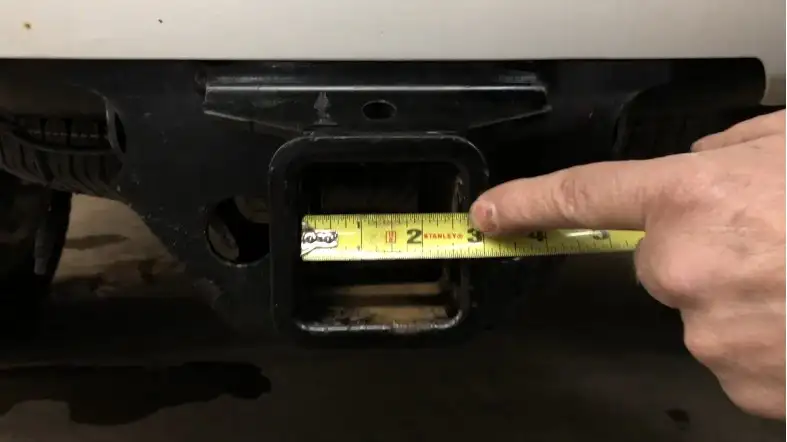
Step 1: Determine the Class of the Hitch Receiver
The first step in measuring the size of a hitch receiver is to determine the hitch class.
Hitch receivers come in five different classes, ranging from Class I to Class V, with each class having a different weight capacity and corresponding size.
It’s important to check your vehicle owner’s manual or consult with a professional to determine the appropriate hitch class for your vehicle.
Step 2: Measure the Opening of the Hitch Receiver
Once you know the hitch class, the next step is to measure the opening of the hitch receiver.
The opening of the hitch receiver is the distance between the inside walls of the receiver tube.
Using a tape measure, measure the inside width and height of the opening.
Step 3: Determine the Size of the Hitch Ball
If you plan to use a hitch ball, you’ll need to measure the shank of the hitch ball to ensure that it will fit into the hitch receiver.
The shank diameter should match the size of the hitch receiver opening.
This is important to ensure that the hitch ball will fit securely and safely into the receiver.
Step 4: Check the Hitch Pin Size
The hitch pin secures the hitch ball mount in the receiver tube. The pin diameter should match the size of the hitch receiver opening.
It’s important to use the correct size of the hitch pin to ensure that the hitch ball mount is secured properly.
By following these four steps, you can easily measure the size of your hitch receiver and make sure that the hitch ball, pin, and mount you choose are the correct size.
What Is The Standard Hitch Receiver Size?
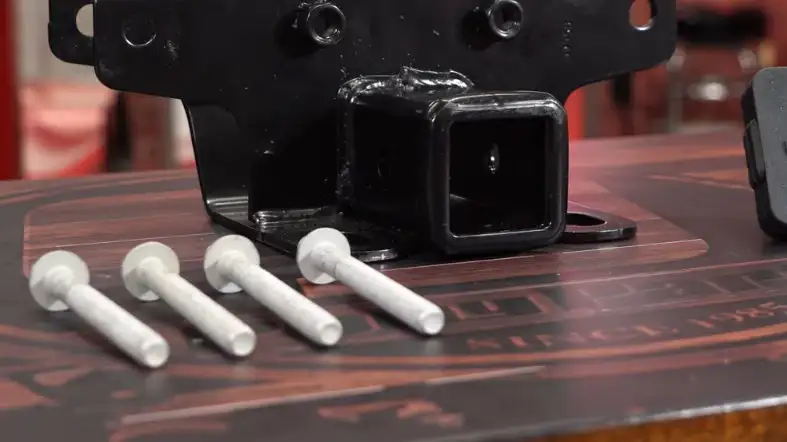
While there are a variety of hitch receiver sizes available, the standard size is 1-1/4″, 2″, 2-1/2″, and 3″.
This size typically fits most vehicles and is ideal for carrying cargo, bikes, kayaks, canoes, or other items.
1-1/4 inch hitches are the mid-size standard hitch receiver.
They fit a wide variety of vehicles, but may not be as strong as larger hitches like 2 and 3-inch receivers.
Generally, 2-inch hitches are the largest size available for most trucks and SUVs.
This size is typically rated to carry heavier loads than 1-1/4 inch or 2-1/2 inch hitches, and they are also more difficult to fit on smaller vehicles.
Besides, 3-inch hitch receivers are available only on large trucks, SUVs, and vans, but they carry the most weight of any receiver hitch.
While they have the ability to carry heavier loads than all other sizes, their size makes them less versatile on smaller vehicles.
Overall, the choice of hitch receiver size depends largely on your vehicle type and what you will be using it for.
If you need to carry heavy loads or tow a trailer, then a larger hitch receiver is probably best.
What To Consider When Choosing A Hitch Receiver?
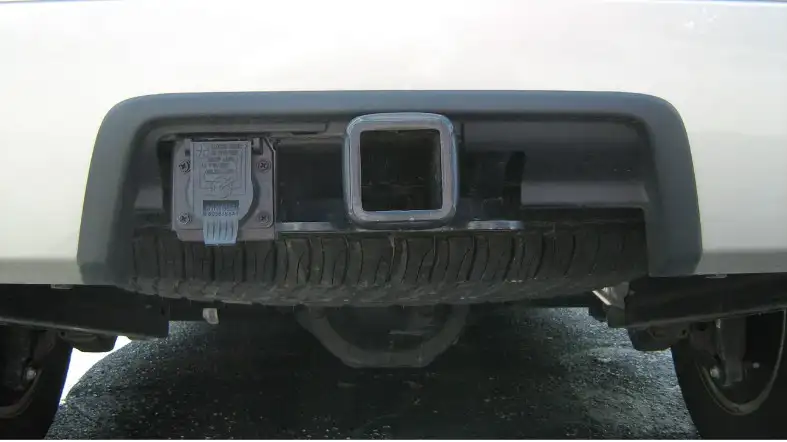
In addition to size, there are a few other things you should consider when choosing a hitch receiver, including:
Towing Capacity
The first thing you need to do is determine the towing capacity of your vehicle.
This information can be found in your owner’s manual or on a placard located on the driver’s side door jamb.
Once you know your vehicle’s towing capacity, you can choose a hitch receiver that meets or exceeds this number.
Weight Capacity
In addition to towing capacity, you also need to consider the weight capacity of the hitch receiver.
The weight capacity is typically lower than the towing capacity and is usually listed as “max trailer weight” or “max tongue weight.”
Tongue weight is the downward force exerted on the hitch by the trailer coupler.
For example, if a hitch receiver has a max trailer weight of 4,000 lbs and a max tongue weight of 400 lbs.
This means that the hitch can safely tow a trailer weighing up to 4,000 lbs.
And, the tongue of the trailer should not exert more than 400 lbs of downward force on the hitch.
If you are planning to use your hitch receiver for towing and carrying cargo, be sure to choose one that has a higher weight capacity.
This will ensure that your hitch receiver can handle the extra weight.
Installation
Another thing to consider when choosing a hitch receiver is installation.
In most cases, hitches can be installed by following the instructions in your owner’s manual.
However, some hitches require professional installation.
If you are not comfortable installing the hitch yourself, be sure to choose one that can be installed by a professional.
How Do I Know What Size Receiver Hitch I Need?
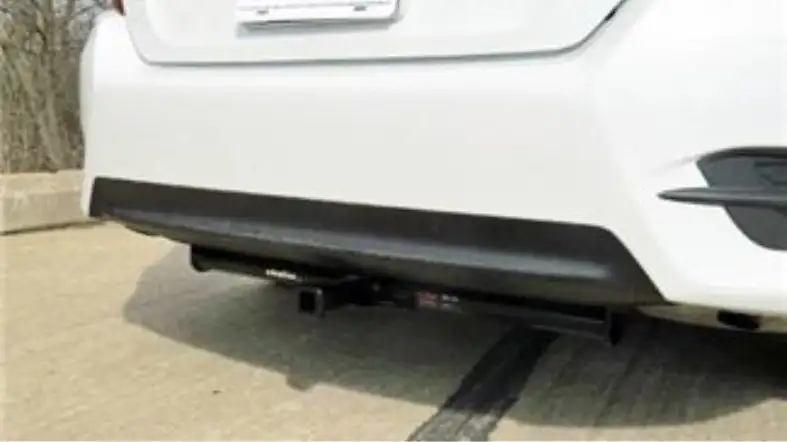
As you can see, there are a few things to consider when choosing a hitch receiver.
But before you can choose the perfect hitch, you need to know what size receiver hitch you need.
The best way to find out is to measure the width and height of your hitch receiver opening.
Once you have these measurements, you can use them to find a hitch receiver that is compatible with your vehicle.
In addition to size, be sure to consider the towing capacity and weight capacity of the hitch receiver.
Keep in mind that some hitches require professional installation.
If you are not comfortable installing the hitch yourself, be sure to choose one that can be installed by a professional.
Can You Use A 2-Inch Hitch In A 3-Inch Receiver?
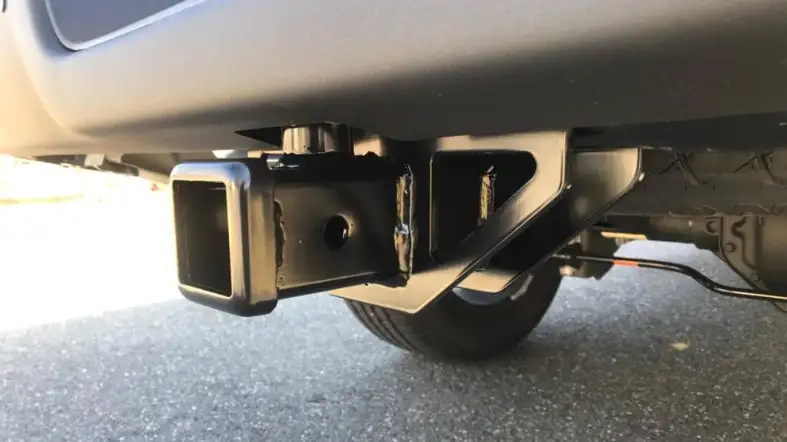
No, you cannot use a 2-inch hitch in a 3-inch receiver. The two sizes are not compatible.
If you try to use a 2-inch hitch in a 3-inch receiver, the hitch will not fit properly and could become dislodged while you are driving.
This could cause serious damage to your vehicle and put you and your passengers at risk.
Also, using an incompatible hitch can void your vehicle’s warranty.
That’s why it is important to choose the right size hitch for your vehicle.
Why Size is Important When Choosing a Hitch Receiver?
It is important to choose the right size hitch receiver because it affects the performance of your vehicle.
A properly sized hitch receiver will provide a secure connection between your vehicle and trailer.
When the hitch receiver is too small, it will not be able to properly support the weight of your trailer or camper.
This could lead to serious problems while you are driving, including the hitch becoming dislodged and causing an accident.
Besides, using a hitch receiver that is too small can void your vehicle’s warranty.
Also, if you have an accident while using an incompatible hitch, your insurance company could refuse to pay out your claim.
FAQs about how to measure hitch receiver size
Do All Vehicles Have A Hitch Receiver?
No, not all vehicles have a hitch receiver.
However, many newer vehicles do come equipped with a hitch receiver.
What If I Don’t Know My Vehicle’s Hitch Receiver Size?
You need to measure your vehicle’s hitch receiver size before you can purchase a hitch.
To measure your hitch receiver, you can follow the above steps.
Can I Install A Hitch Receiver Myself?
It is possible to install a hitch receiver yourself, but we recommend that you have it done by a professional.
Incorrectly installing a hitch receiver can void your vehicle’s warranty and could be dangerous.
Conclusion
It is important to choose the right size hitch receiver for your vehicle.
Now that you know how to measure hitch receiver size, you can be sure to get the right one for your car or truck.
Besides being the right size, your hitch receiver must also be compatible with your vehicle.
So, try to find one that is specifically designed for your make and model.
